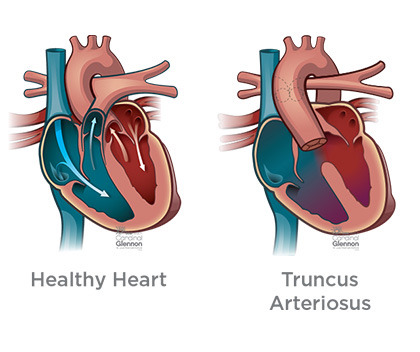#heart defect
Explore tagged Tumblr posts
Text

Sketching and drawing was something i loved to do. I could focus so well, i used to dive deep into it. Now i'm getting PEM Crashes and worsening of symptoms from just doing a small little tiny bit. I can't focus my eyes and coordinate my hand. My battery runs completely low. I feel it draining me second by second. My doctors are right, i should not do commissions or projects. I thought i'd be back at it now. But seems like its not time (yet).
25 notes
·
View notes
Text

[TEXT ID: this system has a rare congenital heart defect]
[IMG ID: an dark pink rectangular box with a red outline with an icon of an anatomical heart with a yellow warning sign overlapping it to the left, and the text 'this system has a rare congenital heart defect' to the right.]
–
Like & Reblog if you use!
(Reblogs can be private)
#owner 🪐🫀#disability userbox#system userbox#sysbox#disabled system userbox#actually did#endos dni#requested box#heart defect#congenital heart defect
22 notes
·
View notes
Text
Once again the age old question "do I actually need this or am I just being lazy again" rises again
#this is about my chronic fatigue btw#thought about getting a rollator or walker every once in a while.#sometimes i forget that I often skip things because of my fatigue and lung issues.#actually disabled#chronic fatigue#heart defect
2 notes
·
View notes
Text
To all my friends, followers, and those that just happen to come across this post:
I announced a while back that I am pregnant with baby number 2, but things have been everything but smooth sailing. Erik, baby 2, isn’t due till April 19th and has something called truncus arteriosus. What does that mean? He has a major heart defect where his arteries didn’t form properly. Picture below compares a healthy heart vs what Erik has.

So that being said, Erik will need open heart surgery when he is born. The plan is to deliver him and he will be brought to NICU for up to 2 weeks. During those weeks, he will be monitored and prepped for transport to a children’s hospital that can fix his heart. Surgery will happen before the two week mark and then he will spend some time (usually about 6 weeks) in a children’s cardiology icu before going home.
Which brings us down to currently. I am 28.5 weeks along and they need Erik to be born as close to 39 weeks as possible to do the surgery safely. I have been having contractions for an entire week now. I am having to take a medical leave from school till after Erik is born and take it as easy as possible. My partner is the only one working so we are working hard at saving money to care for us while Erik is in the hospital. I will most likely be staying in the city near Erik the whole time while my partner finds a babysitter for our other son. It has been a week.
11 notes
·
View notes
Text
God knew I'd be to powerful with a fully functioning cardiovascular system so I got nerfed
#bicuspid aortic valve#heart defect#dysautonomia#chronic illness#anemia#my veins are only good for needles#at least i have that
5 notes
·
View notes
Text
holy shit why is my heart rate 170bpm? i had half an energy drink about six hours ago and i took my dexedrine 14 hours ago, and all i’ve done for physical activity is go up a flight of stairs a few minutes ago. i’m not out of breath or feeling faint. what is even going on
11 notes
·
View notes
Text
Congenital Heart Defect Awareness

#congenital heart disease#congenital heart defects#congenital heart defect#chd#heart disease#heart defects#heart defect#Feb 7-14 is American CHD Awareness Week BTW
5 notes
·
View notes
Text
Find Me Friday: Wally & Fletcher!
Logo that says Reece’s Rainbow Special Needs Adoption Support in blue, below a blue & yellow paint stroke rainbow graphic with a yellow Ukrainian trident symbol on the right half. In this series, each Friday I’m able, I want to share a different child or group of children who are available for adoption and listed through the adoption advocacy website Reece’s Rainbow. Please note, names used on…

View On WordPress
#accessible post#acid reflux#adoption advocacy#asthma#attention deficit hyperactivity disorder#autism#autistic#available for adoption#available to married couples#blind#developmental delay#disability adoption#Eastern Europe adoption#eczema#education#facial dysmorphia#fetal alcohol syndrome disorder#Find Me Friday#Fletcher#FSP#heart defect#medical history#medication#patent foramen ovale#photo descriptions#Reece&039;s Rainbow#vision impairment#waiting children#Wally
0 notes
Text
Belphie was having a weird issue that freaked me out, so I took him in, and they said he could be in early stage heart failure. he’s going to stay while they do an echocardiogram, and then they’ll let me know.
#they said they wouldn’t expect him to react this way to the medication if he had a normal heart#and that worst case scenario he has a heart defect#which would mean his lifespan could only be 6-12 more months#that’s absolute worst case scenario though.#I’m hoping this is just fluid from the FIP that the Fergus people didn’t notice on Wednesday#and that it’ll dry up after more time spent on medication#Christ there goes another 3k though
4K notes
·
View notes
Text
Recognizing Signs of Heart Disease: Insights from Patna’s Top Heart Hospital
An unnaturally fast or irregular heartbeat may indicate dangerous arrhythmias. With specialists who can diagnose and treat a wide range of cardiac rhythm abnormalities, Mediversal, the best hospital in Patna can offer you a professional diagnosis for unusual heartbeat treatment.
Heart Disease is significantly increased by hypertension, a silent killer. You can efficiently control your blood pressure with routine examinations and surveillance at the “hospital near me emergency” services.
Check our recent post: https://mynewsfit.com/signs-of-heart-disease-insights-from-patnas-top-heart-hospital/
0 notes
Text
Stress Tests (TMT) How Important Are They for Evaluating Cardiac Function
What Are Stress Tests?
Stress tests, also known as exercise stress tests or cardiac stress tests, are medical procedures that involve monitoring the body’s response to physical stress, usually in the form of exercise, in order to assess the health and functionality of the cardiovascular system, especially the heart.
These tests are commonly used to diagnose and evaluate various heart conditions and to determine how well the heart can handle increased demands during physical activity. There are different types of stress tests, but they all aim to evaluate the heart’s response to stress in various ways. Here are the main types:
Treadmill Exercise Stress Test (TMT): This is the most common type of stress test. During a TMT, the patient walks or runs on a treadmill while their heart rate, blood pressure, and electrocardiogram (ECG) are continuously monitored.
The test begins at a relatively easy pace and gradually increases in speed and incline. The goal is to elevate the heart rate and monitor for any symptoms or changes in the ECG that could indicate heart problems. stress test cost in Pune
Nuclear Stress Test (Myocardial Perfusion Imaging): In this test, a small amount of radioactive material is injected into the bloodstream. The patient then undergoes a stress test, usually on a treadmill, while a special camera takes images of the heart.
The radioactive material highlights areas of the heart that are receiving less blood flow, helping to identify regions with reduced blood supply, possibly due to blocked or narrowed arteries. stress test cost in Pune
Stress Echocardiogram: This test combines an echocardiogram (ultrasound of the heart) with exercise stress. Before and after exercise, ultrasound images of the heart are taken to assess its structure and function, as well as any changes in blood flow during exercise.
Pharmacological Stress Test: Sometimes, a patient may not be able to exercise due to physical limitations. In such cases, medications that mimic the effects of exercise on the heart are administered to simulate stress. stress test cost in Pune
These medications dilate the coronary arteries and increase the heart rate, similar to what happens during physical activity. Nuclear stress tests and stress echocardiograms can also be performed with pharmacological stress.
Stress tests are valuable tools in diagnosing and evaluating a range of cardiovascular conditions, including coronary artery disease, heart rhythm abnormalities, and heart valve disorders.
The tests can help healthcare professionals determine the presence of reduced blood flow to the heart muscles, detect abnormal heart rhythms, assess exercise tolerance, and evaluate the overall performance of the heart under stress. stress test cost in Pune
Treadmill Stress Tests, also known as Treadmill Exercise Tests (TMT) or Exercise Stress Tests, are important tools in evaluating cardiac function and assessing the overall health of the cardiovascular system.
These tests involve having the patient perform physical exercise, usually by walking or running on a treadmill, while their heart activity is monitored through electrocardiography (ECG) and blood pressure measurements. Here are some key reasons why TMTs are important for evaluating cardiac function:
Detection of Coronary Artery Disease (CAD): TMTs are commonly used to assess the presence of coronary artery disease, which is characterized by reduced blood flow to the heart muscles due to narrowed or blocked coronary arteries.
During exercise, the heart requires more oxygen and nutrients, and if the coronary arteries are narrowed, it can lead to symptoms like chest pain (angina) or abnormal changes in the ECG, indicating reduced blood flow to the heart muscle. stress test cost in Pune
Assessment of Exercise Tolerance: TMTs can evaluate a person’s exercise capacity and tolerance. The point at which a person experiences symptoms (such as chest pain, shortness of breath, or fatigue) during the test can provide insights into their cardiovascular health and fitness level.
Monitoring Cardiac Rhythm: TMTs allow continuous monitoring of the heart’s rhythm during exercise. Abnormalities in the heart’s electrical activity, such as arrhythmias, can be detected more easily when the heart is under stress. stress test cost in Pune
Evaluation of Blood Pressure Response: Blood pressure response to exercise is an important indicator of cardiovascular health. Abnormal changes in blood pressure during or after exercise can provide valuable information about a person’s risk of cardiovascular events.
Assessment of Medication Effects: TMTs can help evaluate the effectiveness of medications in managing cardiac conditions. Changes in exercise tolerance, heart rate, blood pressure, and ECG patterns can indicate whether medications are helping improve cardiac function. stress test cost in Pune
Risk Stratification: TMT results can help classify patients into different risk categories based on their exercise performance and any abnormal ECG changes. This information aids in determining the need for further diagnostic tests or interventions.
Post-Intervention Evaluation: TMTs can be used to assess the success of interventions such as coronary artery stenting or bypass surgery. They can help determine whether blood flow to the heart has improved after such procedures. stress test cost in Pune
Monitoring Progress Over Time: TMTs can be performed at different time points to monitor changes in cardiac function over time. This is particularly useful for individuals with known cardiac conditions or those undergoing rehabilitation. stress test cost in Pune
However, it’s important to note that while TMTs provide valuable information, they have limitations. They might not always detect subtle or early stages of coronary artery disease, and false-positive or false-negative results are possible.
Therefore, TMTs are often used in conjunction with other tests, such as imaging studies (e.g., stress echocardiography, nuclear stress tests), to provide a more comprehensive assessment of cardiac function.
As with any medical test, the interpretation of TMT results requires expertise from a qualified healthcare professional, and decisions about further testing or treatment should be based on a combination of clinical judgment, patient history, and the overall clinical context.
stress test cost in Pune
0 notes
Text

Me 14 years old, summer of 1994 in Denmark
1 note
·
View note
Text
Atrial Septic Defect
A birth defect that causes a hole in the wall between the hearts upper chambers (atria).
0 notes
Text










Benny Cross (The Bikeriders) | Jax Teller (Sons of Anarchy)
for @imaginaryplaythings 💕
#austin butler#benny cross#charlie hunnam#jax teller#the bikeriders#sons of anarchy#crossover#don't tell me they're not brothers#benny is jax's little brother#like he's born with the same heart defect jax has#but unlike in the show he survives#so there ya go#an au in the tags ��
1K notes
·
View notes
Text
forever missing the person i could’ve been if i wasn’t sick
#disabled#chronically ill#disability#chronic illness#multiply disabled#physically disabled#chronic pain#chronic fatigue#cystic fibrosis#cf#congenital heart disease#congenital heart defects#chd#cripple#crippled#cripple posting#spoonie
528 notes
·
View notes
Text
I can't wait 'til I turn 55 (peak hotness for a man, imo) in 8 years because it will be extra hilarious to get scare-mongering about me having a heart attack before I am 50 due to being trans.
#if Anon was so obsessed to uncover my heart defect#why didn't they also see how much time I spend on the trail#mind-boggling brainworms
229 notes
·
View notes